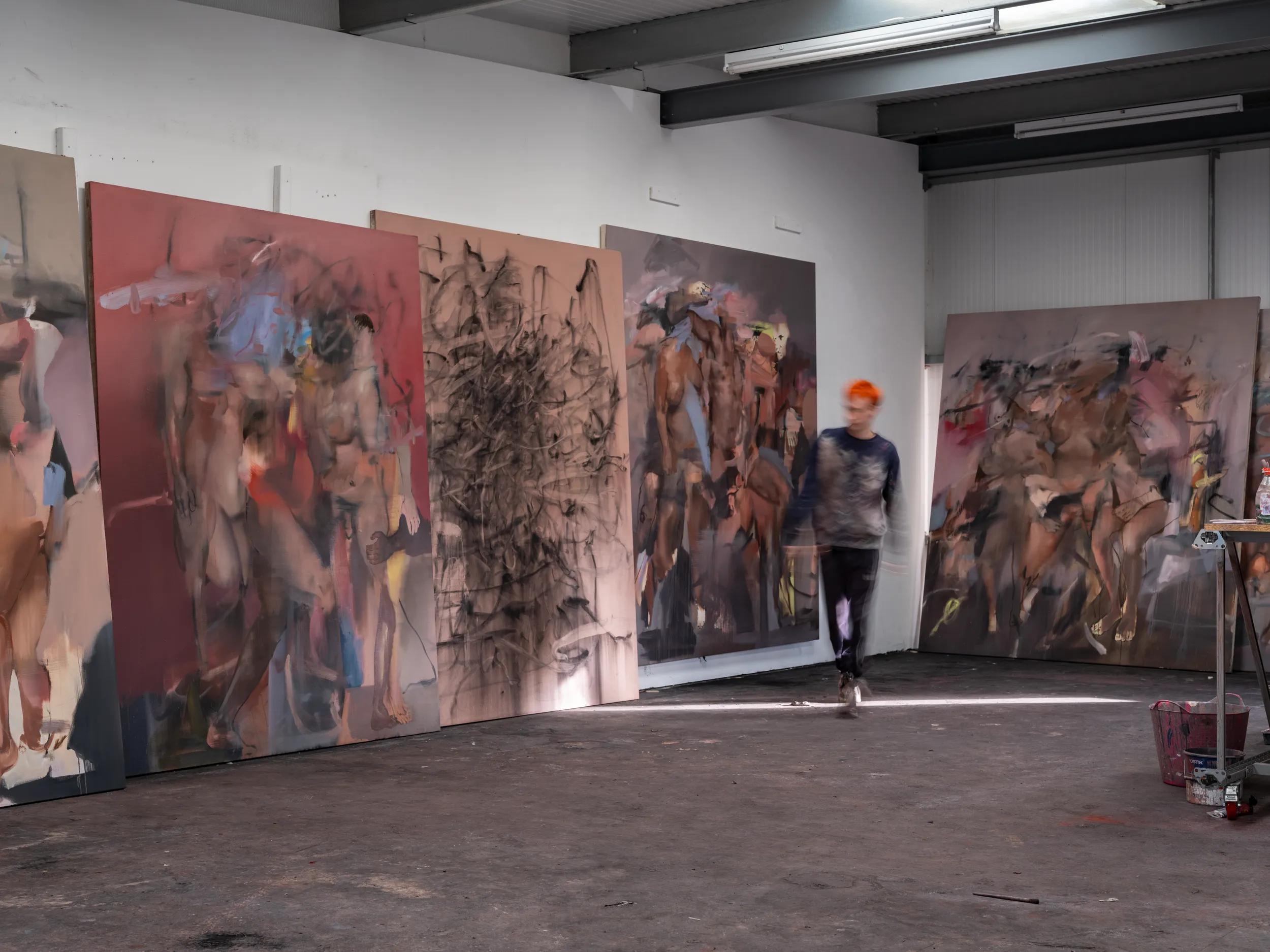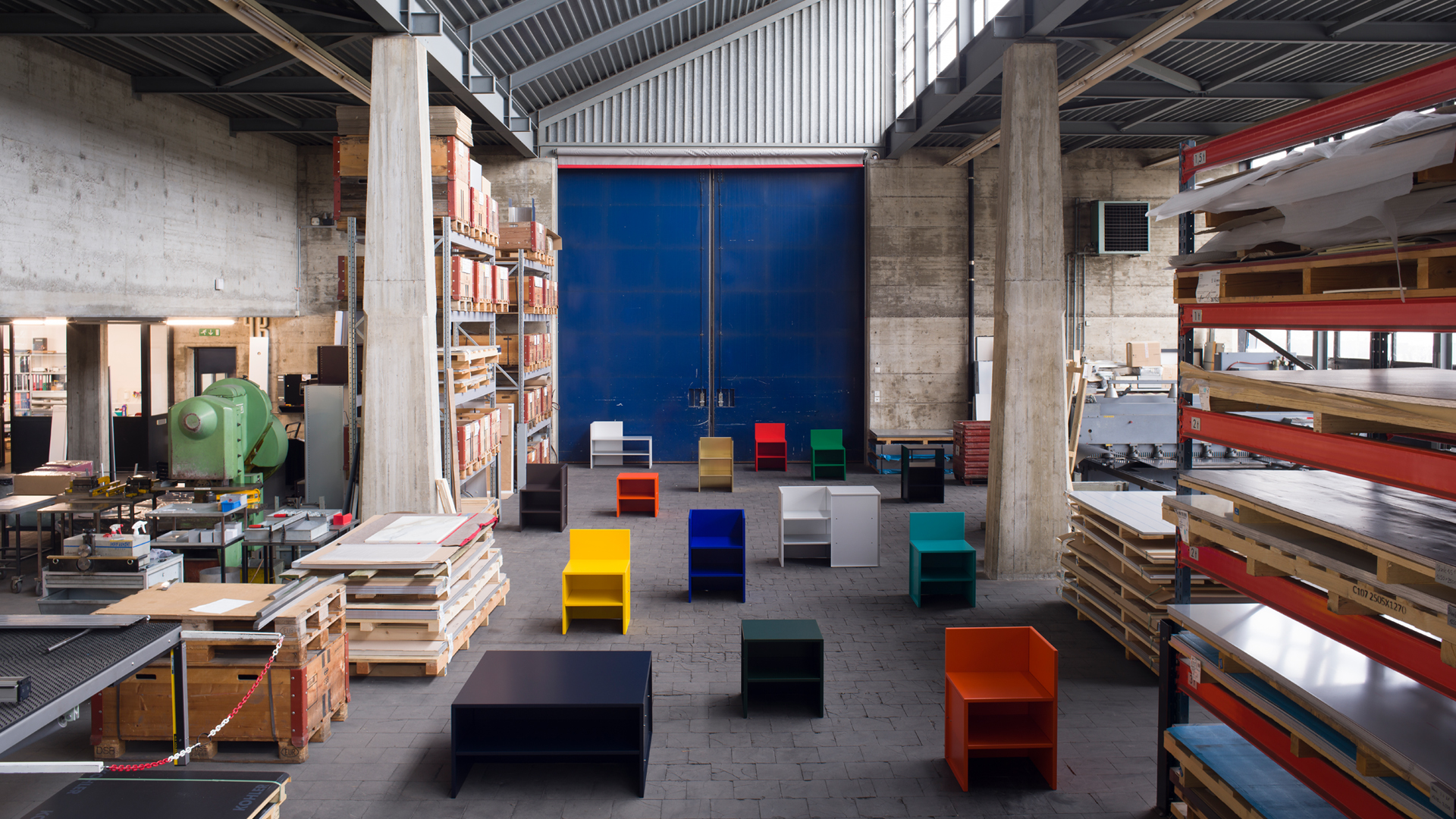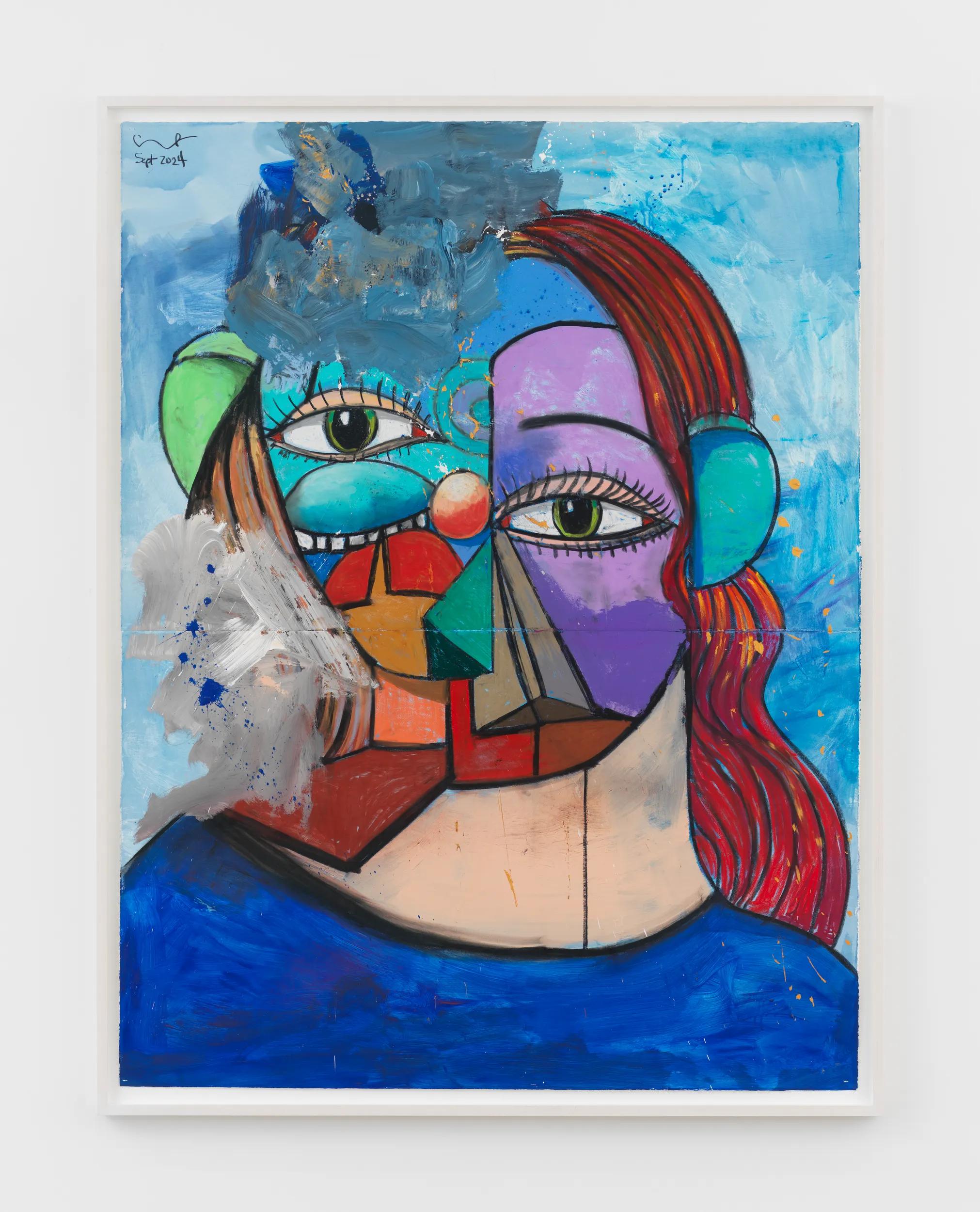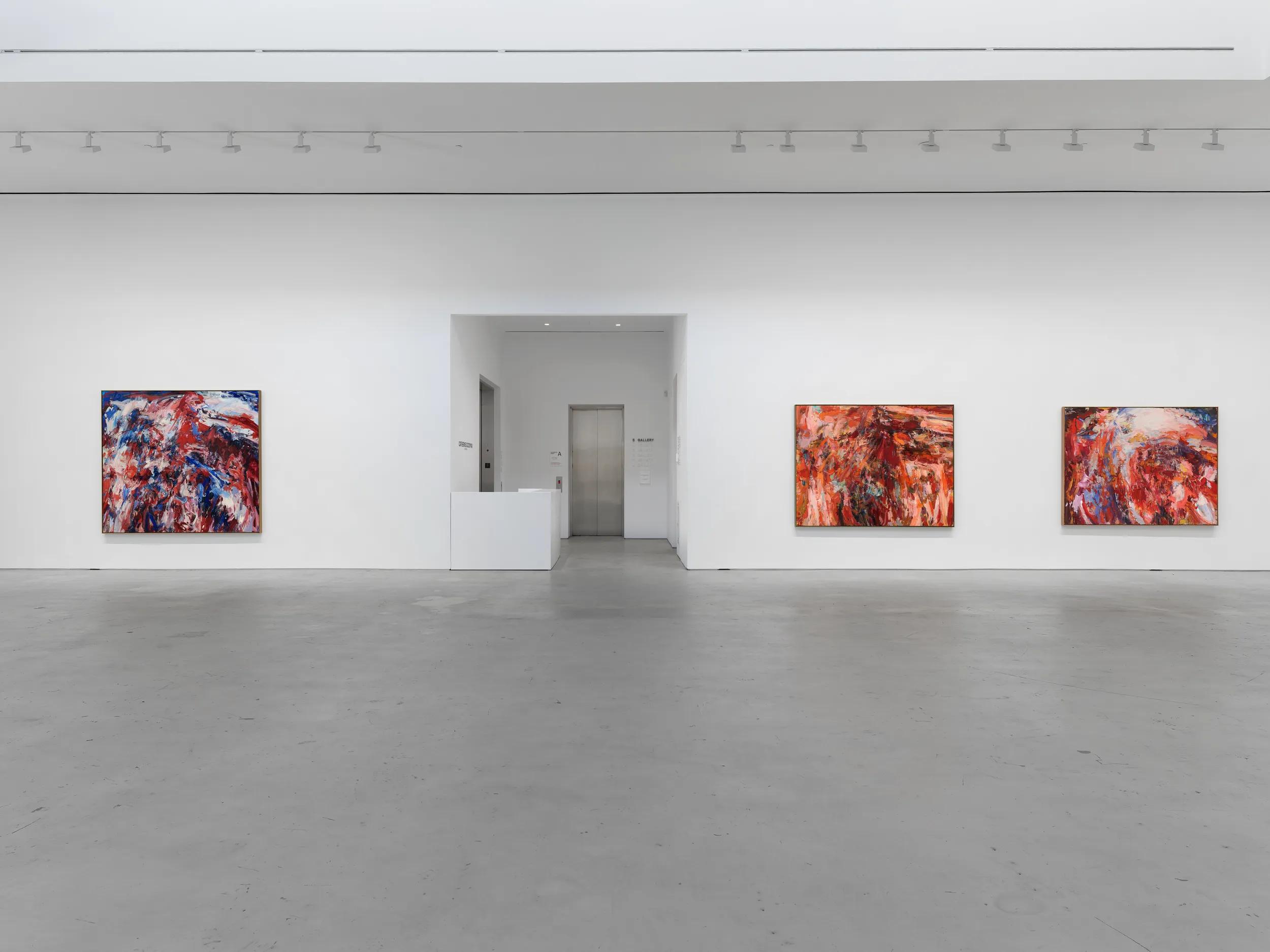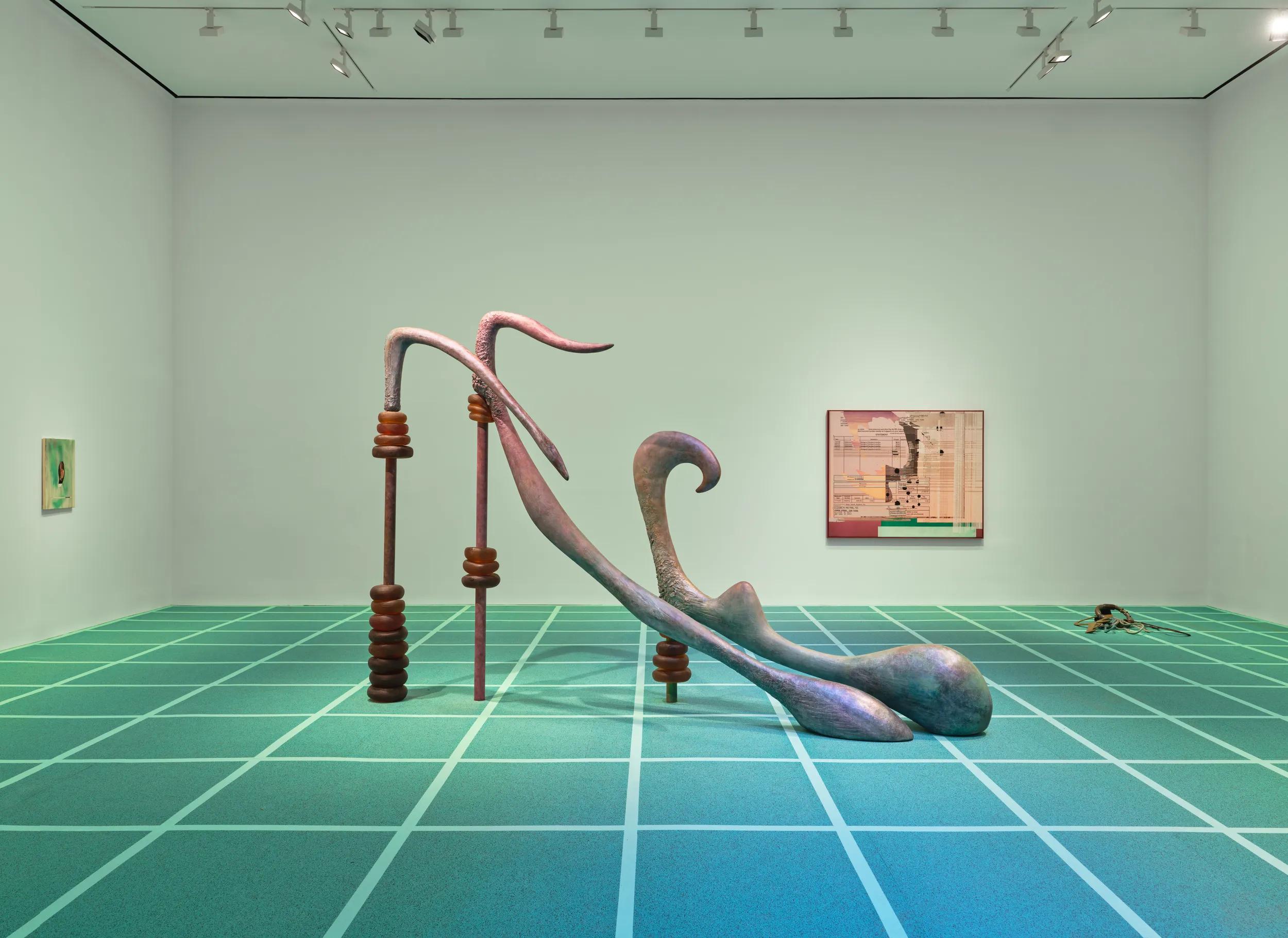
Louise Bourgeois
Sublimation
28 January - 12 March 2005
London
Louise Bourgeois is recognised as one of the most important and influential artists working today. Hauser & Wirth London are delighted to present Sublimation (2002), an extraordinary narrative work in mixed media, incorporating a series of the artist’s drawings and text. The pages are beautifully presented in frames, hung against the gallery’s panelled walls. The exhibition also includes two large, individual hanging sculptures, both Untitled (2004), and Be Calme (October 1st-31st) (2004), a new suite of drawings. For over seven decades, the creative process for Bourgeois has been fuelled by an introspective reality that is unique to the artist, often visualised through an exorcism of her childhood and a frank examination of female sexuality. A variety of forms between different genres, media and materials have determined the stylistic complexity of Bourgeois’ oeuvre, articulated by recurrent motifs and an intensely personal symbolism.
Sublimation (2002) is a fifteen-paged mixed media work consisting of text and drawings by Bourgeois. Each page is approximately 105 x 148 cm, individually framed, and forms a narrative of her response to witnessing a couple fighting in the presence of their child. The artist’s own traumatic memories are brought forth in her observation of the young boy displacing his emotion into a physical form – in this case by sweeping the floor with a broom. Bourgeois is talking of sublimation and considers the process a gift. For her, it provides the impulse behind her sculptural work. She ends the book, “I feel that if we are able to subliminate, in any way we do, that we should feel thankful. I cannot talk about any other profession, but the artist is blessed with this power.”
Suspended from the gallery’s Lutyens-designed ceiling are the two large, protuberant aluminium sculptures, both Untitled (2004). They are individual works that resemble nests, each created as autonomous forms in their own right. The abstract forms are part of an ongoing series of hanging sculptures by Bourgeois and those exhibited at Hauser & Wirth have a particular affinity to a previous work entitled Les Bienvenus (1996), installed in Le Parc de la Mairie of Choisy-le-Roi, the village where Bourgeois grew up. The spiralling, interwoven sculptural forms are augmented by a natural swing through an axis, and expresses Bourgeois’ views on the fragility of marriage and relationships.
Seemingly balanced by a thread, Bourgeois applies an attitude of confidence and tenderness to the large-scale sculptures. The artist has long been an explorer of new materials in her work, experimenting with their aesthetic potential. The cool surface of aluminium is heightened by Bourgeois’ sophisticated treatment and she exudes a sure touch in the irregular mould of gentle, multiple curves. The material’s inherent qualities are thus exquisitely dramatised by subtle nuances from the effect of light.
Hauser & Wirth will also be exhibiting Be Calme (October 1st-31st) (2004), a new suite of 31 double sided mixed media drawings. Drawing plays a vital role for the artist and groups such as these abstract works are a documentation of time, for Bourgeois has not left her home since the mid-1990s. The fervent rhythms and gauze-like structures become an obsessive vehicle for recalling the past and the passing of time.
As early as 1950, Louise Bourgeois was one of the first artists to create ‘environments’, often referring to the theme of the cell and the room. She is acknowledged as a pioneer in taking art out of the frame, placing herself front and centre in the exploration of identity. In works such as The Red Room - Parents (1994), objéts trouvés and personal items placed can be read as “poetic architectures of memory”. The use of the concentric or spiral form intertwines a painful life story anchored in the unconscious. Bourgeois’ work is often impregnated with fantastical and sexual connotations whose crudity and extravagance belie an apparent surrealism - a distillation of the place of childhood and youth, of sanctuary, withdrawal and isolation.
Louise Bourgeois was born in France in 1911 and has been working in America since 1938. She studied at the École du Louvre, the Academie Julian and in Fernand Leger’s studio. Her work is held in all major collections, including the Metropolitan Museum, Whitney Museum and Museum of Modern Art, New York, the National Gallery of Art, Washington, the National Galleries of Australia and Canada, and Tate Modern where she was the first artist commissioned by Unilever to exhibit in the Turbine Hall. Her major solo exhibitions include MOMA, New York (1994), the Whitney Museum of Modern Art (1998), the Serpentine Gallery, London (1998), the Guggenheim Bilbao (2001), The State Hermitage Museum, St. Petersburg (2001). Upcoming exhibitions include the Wilfredo Lam Centre, Havana (2005) and a retrospective at Tate Modern is due in 2007. Group shows include the São Paolo Bienal of 1996, and Documenta 9 in 1989; she represented the United States of America at the Venice Biennale in 1993. The artist lives and works in New York.
Selected images

Untitled
2004

Untitled
2004

Sublimation
2002

Sublimation
2002

Sublimation
2002

Sublimation
2002

Sublimation
2002

Sublimation
2002

Sublimation
2002

Sublimation
2002

Sublimation
2002

Sublimation
2002

Sublimation
2002

Sublimation
2002

Sublimation
2002

Sublimation
2002

Sublimation
2002
About the Artist
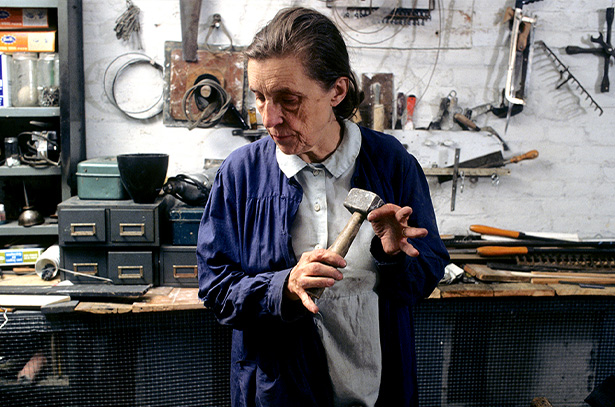
Louise Bourgeois
Born in France in 1911, and working in America from 1938 until her death in 2010, Louise Bourgeois is recognized as one of the most important and influential artists of the 20th Century. For over seven decades, Bourgeois’s creative process was fueled by an introspective reality, often rooted in cathartic re-visitations of early childhood trauma and frank examinations of female sexuality. Articulated by recurrent motifs (including body parts, houses and spiders), personal symbolism and psychological release, the conceptual and stylistic complexity of Bourgeois’s oeuvre—employing a variety of genres, media and materials—plays upon the powers of association, memory, fantasy, and fear.
Bourgeois’s work is inextricably entwined with her life and experiences: fathoming the depths of emotion and psychology across two- and three-dimensional planes of expression. ‘Art,’ as she once remarked in an interview, ‘is the experience, the re-experience of a trauma.’ Arising from distinct and highly individualized processes of conceptualization, Bourgeois's multiplicity of forms and materials enact a perpetual play: at once embedding and conjuring emotions, only to dispel and disperse their psychological grasp. Employing motifs, dramatic colors, dense skeins of thread, and vast variety of media, Bourgeois's distinctive symbolic code enmeshes the complexities of the human experience and individual introspection.
Rather than pursuing formalist concerns for their own sake, Bourgeois endeavored to find the most appropriate means of expressing her ideas and emotions, combining a wide range of materials—variously, fabric, plaster, latex, marble and bronze—with an endless repertoire of found objects. Although her oeuvre traverses the realms of painting, drawing, printmaking, and performance, Bourgeois remains best known for her work in sculpture.
Bourgeois’s early works include her distinct 'Personages' from the late 1940s and early 1950s; a series of free-standing sculptures which reference the human figure and various urban structures, including skyscrapers. The ‘Personages’ served as physical surrogates for the friends and family Bourgeois had left behind in France, while also highlighting an interest in architecture dating back to her childhood. Her installation of these sculptures as clustered ‘environments’ in 1949 and 1950 foreshadowed the immersive encounters of installation art twenty years before the genre’s rise to prominence.
Bourgeois’s work was included in the seminal exhibition ‘Eccentric Abstraction,’ curated by Lucy Lippard for New York's Fischbach Gallery in 1966. Major breakthroughs on the international scene followed with The Museum of Modern Art in New York's 1982 retrospective of her work; Bourgeois's participation in Documenta IX in 1992; and her representation of the United States at the 45th Venice Biennale in 1993.
In 2001, Bourgeois was the first artist commissioned to fill the Tate Modern’s cavernous Turbine Hall. The Tate Modern’s 2007 retrospective of her works, which subsequently traveled to the Centre Pompidou in Paris; The Guggenheim Museum in New York; The Museum of Contemporary Art in Los Angeles; and The Hirshhorn Museum & Sculpture Garden in Washington D.C., cemented her legacy as a foremost grande dame of late Modernism.
Header image: Louise Bourgeois, ARCHED FIGURE, 1993 © The Easton Foundation/VAGA, NY, Photo: Christopher Burke
Current Exhibitions
1 / 12





